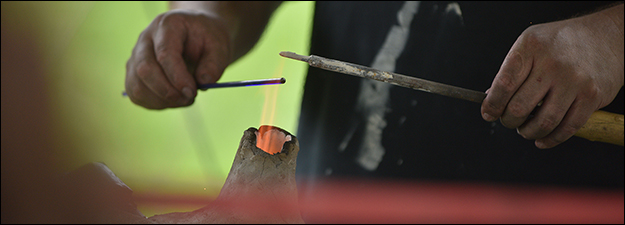The Long Lives of Medieval Objects, from Big to Small III: Reception
Sponsoring Organization(s)
AVISTA: The Association Villard de Honnecourt for the Interdisciplinary Study of Medieval Technology, Science, and Art
Organizer Name
Jennifer M. Feltman, Sarah Thompson
Organizer Affiliation
Univ. of West Florida, Rochester Institute of Technology
Presider Name
Jennifer M. Feltman
Paper Title 1
The Victory Cross Redux: Politics and Medieval Art in the Aftermath of the Spanish Civil War
Presenter 1 Name
Matilde Mateo
Presenter 1 Affiliation
Syracuse Univ.
Paper Title 2
The Magdeburger Reiter in Modern Germany
Presenter 2 Name
William Diebold
Presenter 2 Affiliation
Reed College
Paper Title 3
The Fate of the Bronze Doors of Benevento Cathedral during and after World War II
Presenter 3 Name
Cathleen Hoeniger
Presenter 3 Affiliation
Queen's Univ. Kingston
Start Date
14-5-2016 3:30 PM
Session Location
Schneider 1220
Description
Traditional histories often privilege the moment of an object’s origin, whether it be the design of a building, the production of a manuscript, or the creation of decorative arts, ritual or mundane. Yet medieval objects have long and expansive lives that defy the period and geographic boundaries set by academic disciplines. Many medieval objects have extended prehistories emerging from their sites and contexts of creation, and most medieval objects have undergone a variety of interventions and adaptations since coming into being. The lives of these objects have been further extended through historiography and digital media. In this, the third of three AVISTA sponsored sessions, the reception of medieval objects in later periods is considered.
Jennifer M. Feltman, Sarah Thompson
The Long Lives of Medieval Objects, from Big to Small III: Reception
Schneider 1220
Traditional histories often privilege the moment of an object’s origin, whether it be the design of a building, the production of a manuscript, or the creation of decorative arts, ritual or mundane. Yet medieval objects have long and expansive lives that defy the period and geographic boundaries set by academic disciplines. Many medieval objects have extended prehistories emerging from their sites and contexts of creation, and most medieval objects have undergone a variety of interventions and adaptations since coming into being. The lives of these objects have been further extended through historiography and digital media. In this, the third of three AVISTA sponsored sessions, the reception of medieval objects in later periods is considered.
Jennifer M. Feltman, Sarah Thompson

